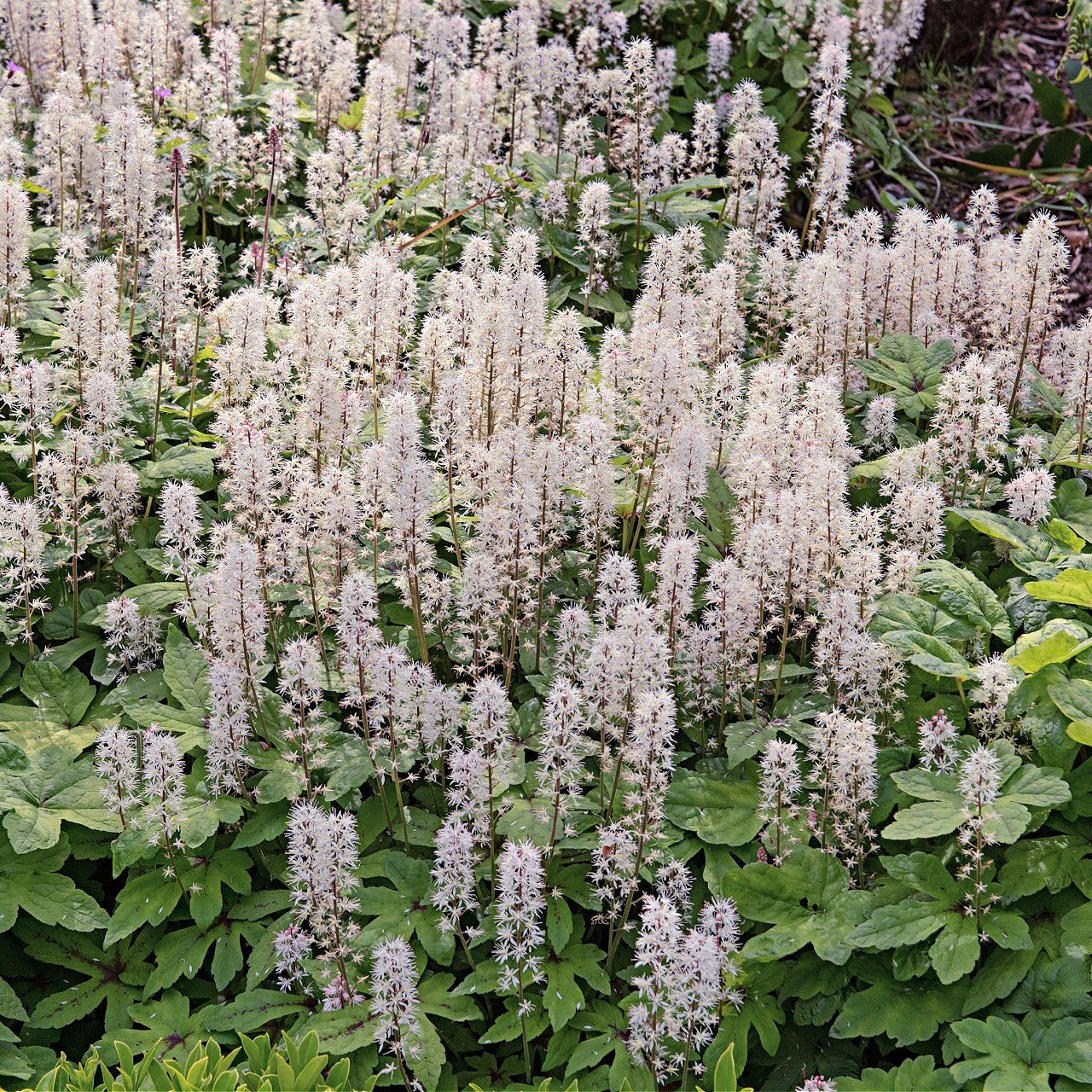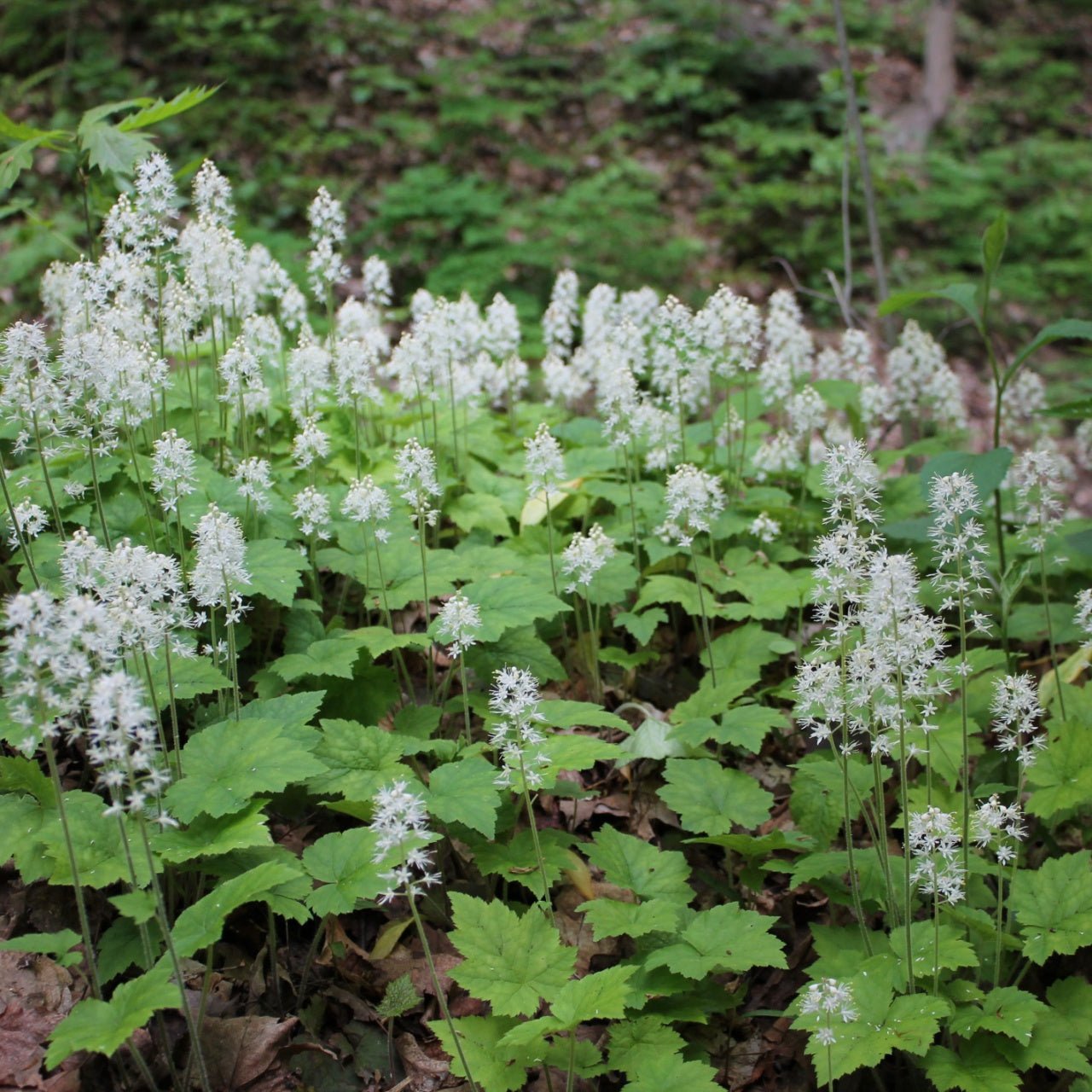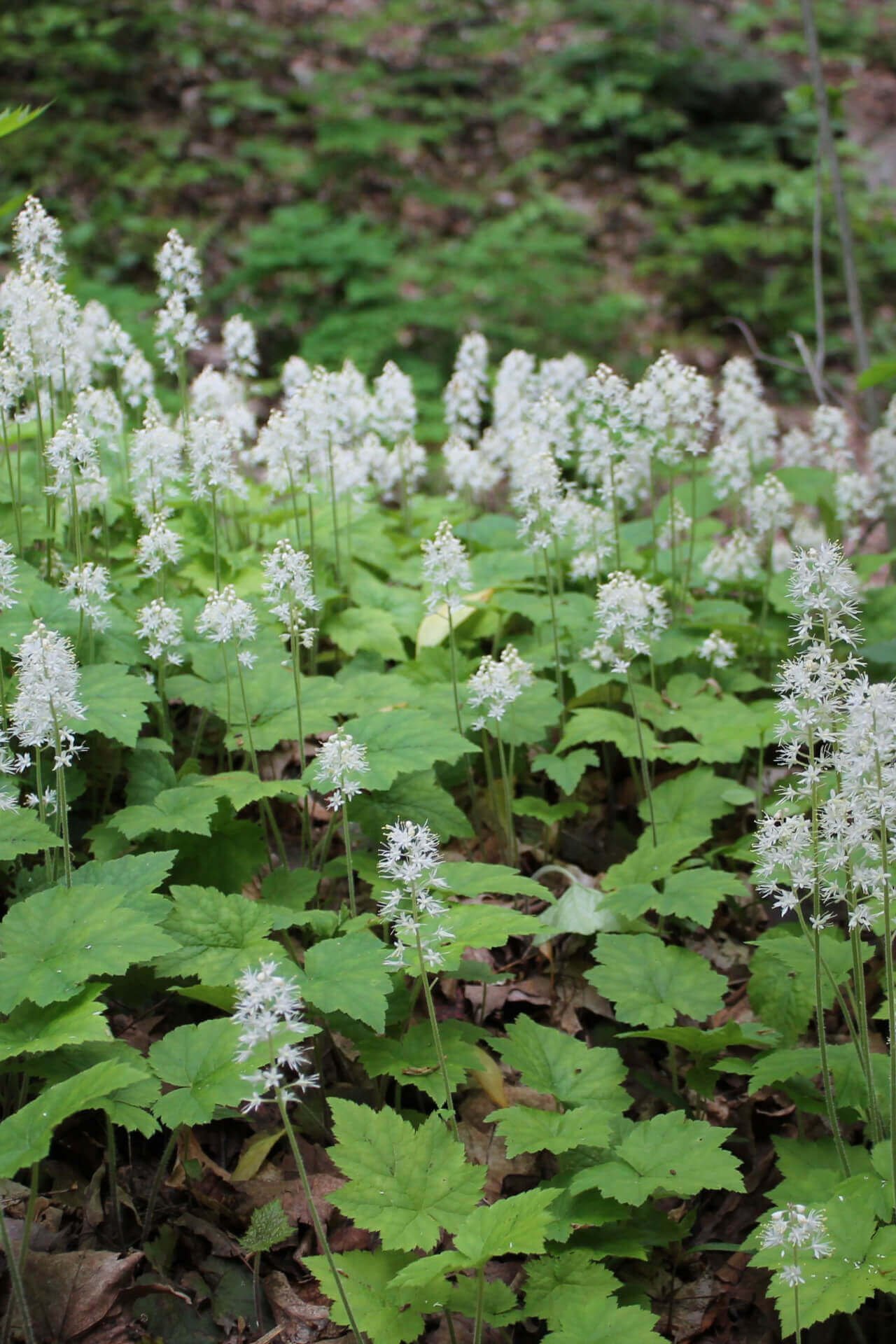




Foam Flower
We sell bare root plants - click here to see what you'll receive
Foam Flower - Tiarella
Foam Flower is a perennial plant with delicate, frothy spikes of white or pinkish blooms and deeply lobed, attractive foliage resembling foamy. It is a beautiful and beneficial plant with numerous advantages in landscaping projects. This herbaceous perennial belongs to the Saxifragaceae family and is admired for its delicate bloom spikes and attractive foliage. One of the primary benefits of incorporating it into landscaping is its captivating appearance.
Their feathery white spires look lovely in sun-dappled gardens. With time, its foliage will form colonies with an excellent ground cover in shady spots.
Where Foam Flower Can Be Found
It is native to wooded areas in eastern North America. This perennial can be found on seeps and stream banks, by creeks, in clearings, and under maple, hemlock, and white cedar trees. Along the eastern coast, it starts blooming in mid-March and continues to blossom through April.
It owes its name to the sprays of tiny white to pinkish blooms that cover its three- to four-inch-long racemes. These delicate blossoms float around the tips of their long, graceful stems, which rise one to three feet above mounds of low-growing leaves.
After it fades, the plant's foliage stays lush and glossy. The plant's bright green leaves grow up to four inches wide and usually have three to five lobes. The leaves' shape, color, and pattern can vary depending on the cultivar. They may stay evergreen in warmer climates, but their leaves and rosettes often turn red and bronze in the fall when temperatures cool down.
Foam Flower Loves Shade
Tiarella cordifolia brings soft, gentle intrigue to shady spots in your landscape. These blooms work beautifully in ornamental, wildflower, and woodland gardens beside ferns and blooms like Solomon's seal, dwarf crested iris, and bluebells. It adds a magical quality to small and mass plantings, grows under trees, and suits spacious pots and planters well. It also makes a lovely border or ground cover.
It can be propagated by dividing and replanting the roots in late fall or starting from seed indoors, around ten weeks before the last spring freeze. Once the frost has parted, you can plant the seedling outside.
They Are Amazing Pollinator Plants
It lures bees and other pollinators to your landscape, making them a valuable addition. Some small mammals eat its seeds for nourishment.
They Add Whimsical Charm To Your Garden
Planting them will add whimsical charm to your springtime garden. Once established in your landscape, you can enjoy their showy blooms for years.
They are perennials that prefer shade and bloom star-shaped flowers in spring. Their beautiful foliage makes them stand out even when not blooming.
Where can I Plant Them?
They do well in an environment that is shaded or partially shaded, with soils that have good drainage and are moist.
Are They Easy to Care For
They are very easy to grow and do not need much attention. For best results, moderate watering, often coupled with light mulching, is recommended.
Do they attract wildlife?
They attract pollinators such as butterflies, making your garden quite lively. They're also deer-resistant, and this is an advantage for gardeners in areas with wildlife.
Can they be grown in containers?
Foam flowers can be grown in containers. Container-grown ones require well-drained containers with shade exposure. The containers can be placed on patios or balconies or in relatively small garden areas.
| Planting zone | [3, 4, 5, 6, 7, 8] |
|---|---|
| Bloom season | Summer |
| Bloom color | White |
| Height At Maturity | Under 12" |







Foam Flower
| Planting zone | [3, 4, 5, 6, 7, 8] |
|---|---|
| Bloom season | Summer |
| Bloom color | White |
| Height At Maturity | Under 12" |

